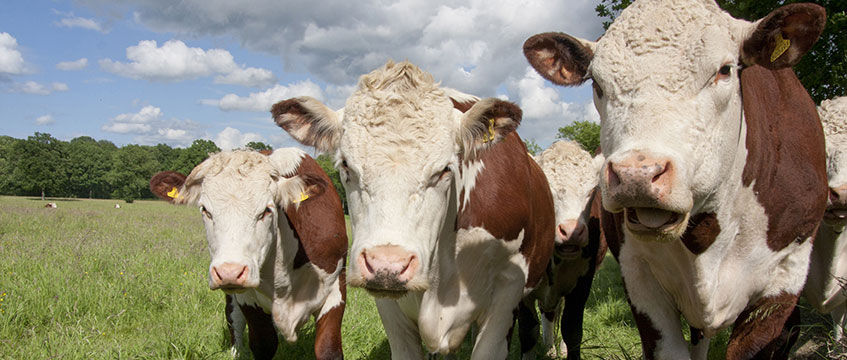Many real estate practitioners advise clients in relation to projects and developments involving rural land. That often means dealing with agricultural occupiers in one guise or another.
For many lawyers, this niche area of property law can cause difficulties and confusion over the occupier’s rights and the all-important question of how to obtain vacant possession. This area of law can be a minefield, especially as agricultural occupiers often do not have written agreements and may have been farming the land for a very long time.
So how do you know what type of agricultural occupier you are dealing with?
Lease versus licence
The starting place is always to review any written agreement, if there is one. However, property practitioners must still look beyond a written agreement and consider what is happening on the ground. That is especially relevant where an agreement purports to be a licence.
Grazing licences are documents to be particularly cautious of. If the occupier has exclusive possession, regardless of whether their agreement is referred to as a licence, then they are likely to have a tenancy.
One of the key factual questions that can help with this distinction is whether the occupier is there all year round. For example, if you are dealing with an arrangement for summer grazing only, that is more likely to be a licence. Also, you should consider questions such as: who maintains the fencing and gates? Who cuts the hedges? Who is responsible for supplying water and installing and maintaining water troughs? If the answer is the landowner, it is much more likely to be a licence. If the occupier is responsible for all of these, then that perhaps points towards a tenancy.
Agricultural tenancies
If you think you are dealing with an agricultural tenancy, the next question is: what type of tenancy is it?
This will depend on when occupation started. There was a key change in the law which came into effect on 1 September 1995. If occupation began before this date, the tenancy will be an Agricultural Holdings Act 1986 tenancy. If it was on or after this date, you are dealing with a tenancy under the Agricultural Tenancies Act 1995: these tenancies are known as farm business tenancies.
The distinction between the two tenancy regimes is significant in many ways. One key difference is the way it greatly impacts on how easily you can recover possession of the land and the security of tenure any occupier has. 1986 Act tenancies are much more difficult to end, and older ones granted before 12 July 1984 also carry succession rights. That means they can be passed on for up to two generations and, therefore, can last for many decades. As such, while this legislation seems outdated, there are still many ongoing 1986 Act tenancies across the country that will last for many more years to come.
Serving a notice to quit for a 1986 Act tenancy is not straightforward. Often, trying to establish the term date can be a problem, with lots of uncertainty on when occupation began. That can mean serving a long notice to quit to cover off possible arguments on the term date.
There are also complex rules regarding when a notice can be served, and when a tenant can challenge the notice. The most used notices to quit are the special cases listed in Schedule 3 of the 1986 Act. These include a Case B notice, which gives the landlord the ability to terminate a 1986 Act tenancy where the landowner has planning consent for non-agricultural use. However, the requirements for these notices are still difficult to fulfil and can be objected to by the tenant, leading to lengthy and costly arbitration proceedings. If your client is looking to develop the land, a lot of thought needs to be given to make sure that the tests set out in Case B are met and that the notice is served at the correct time.
FBTs under the 1995 Act are generally far more straightforward. The correct method of terminating an FBT will depend on whether it is a fixed-term tenancy or a periodic tenancy. The various types and relevant notice periods are set out in the table below. It is, of course, also essential to check the terms of any written agreement, but to keep in mind any overriding statutory requirements.
Is the land used for agriculture?
Another important point to consider is whether the occupation is strictly agricultural. If it is not, it may not fall within the definition of an agricultural tenancy at all, and it may therefore lose the protection of either of the Acts discussed above. The definition used within the legislation is the same as that used in the Town and Country Planning Act 1990: “horticulture, fruit growing, seed growing, dairy farming and livestock breeding and keeping, the use of land as grazing land, meadow land, osier land, market gardens and nursery grounds, and the use of land for woodlands where that use is ancillary to the farming of land for other agricultural purposes”.
Consideration does need to be given to other commercial activities being undertaken at the farm that would not fall within the definition of agriculture. It is important to check the terms of any written agreements that the agricultural occupier has so you can consider whether these activities are part of the permitted use and how that may impact on termination of any such occupation.
Expert advice
The law around agricultural occupiers can be difficult and complex. If you are dealing with occupied rural land, you should get a specialist agricultural lawyer to assist with the transaction.
Edward Venmore is a partner and Rose Westwood is an associate at Foot Anstey








